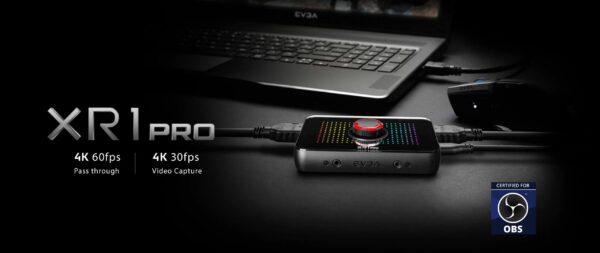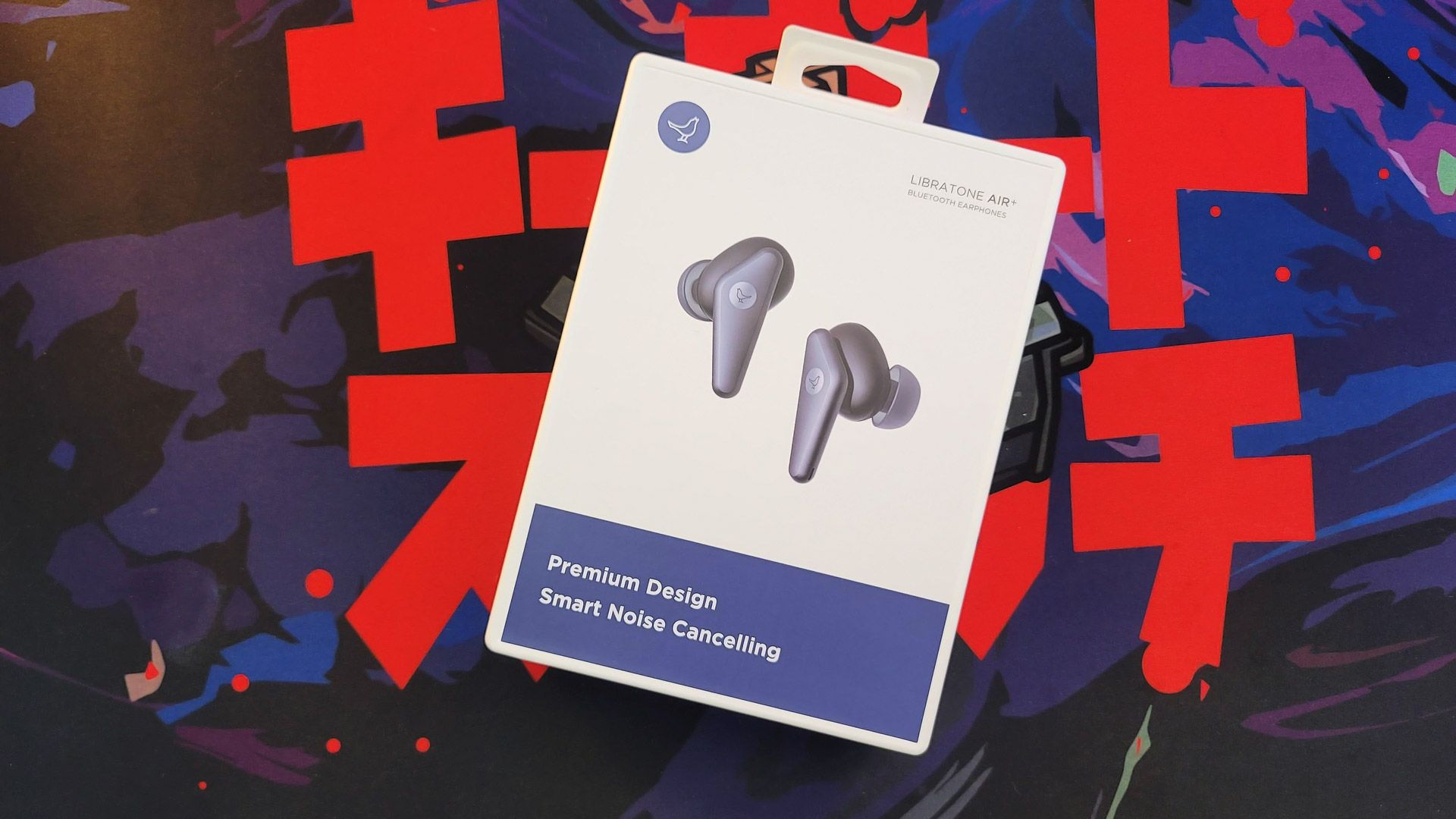
Libratone is a Scandinavian audio brand focusing on earphones and speakers, but with the Air+ second-gen, it’s out to break new ground. The Air+ 2s are a flagship earphone, delivering a feature set aimed to compete with the heaviest hitters in the industry: ANC, app support, IP water-resitance, and, of course, high-quality audio. Libratone isn’t a brand we were familiar with here at MMORPG, so we went in completely blind, ready for anything.
Do these $229 true wireless earbuds have what it takes to stand alongside or even unseat the Jabras and Sonys of the industry? The answer might surprise you.
Specifications
- Current Price: $229 (Amazon)
- Key Features:
- Noise-canceling
- Ear Tip fit test
- Reliable connectivity
- Dual-mic
- Smart audio tuning
- Rich and clear sound
- Ultra-lightweight design
- Multiple devices
- Battery time
- Wireless charging case
- Dust, sweat, and splash-proof design
- Customizable tap function
- Use one or two earbuds
- Wear detect
- Drivers: Dynamic, 5.3mm
- Bluetooth Version: 5.2
- High-Res Codec Support: aptX
- Active Noise Cancellation: 30dB (max)
- Battery Life:
- Earbuds: Up to 6 hours
- Case: 18 hours
- Total: 24 hours
- Wireless Charging: Yes
- Multipoint Connect: Yes (3 devices)
- IP Rating: IP54
- In the Box:
- Libratone AIR+ wireless earbuds (left and right)
- Charging case
- USB-C charging cable
- 3 ear tip sizes (S, M, L)

Libratone Air+ 2 – First Impressions and Key Features
The Libratone Air+ 2s are the successor to the Air+ 2020 revision that first hit Amazon in September of 2020. They follow the same AirPods-like design, with the oval-shaped bud and triangular stem. This new version is a step-up in quality, both in features and design. It’s also a step-up in price — $229 versus $139, minus any sale — making it Libratone’s most premium headphone to date.
That bump in quality comes with a new fit and finish in keeping with the category it’s now competing in. The buds are small and sleek, perfectly sized to fit securely and comfortably, while still being unobtrusive. The Air+ 2s are available in black or white, the former actually being closer to a midnight blue. There are also polished badges on each bud with the company’s cute little bird logo. They look good and don’t stand out as much as AirPods, which I like.
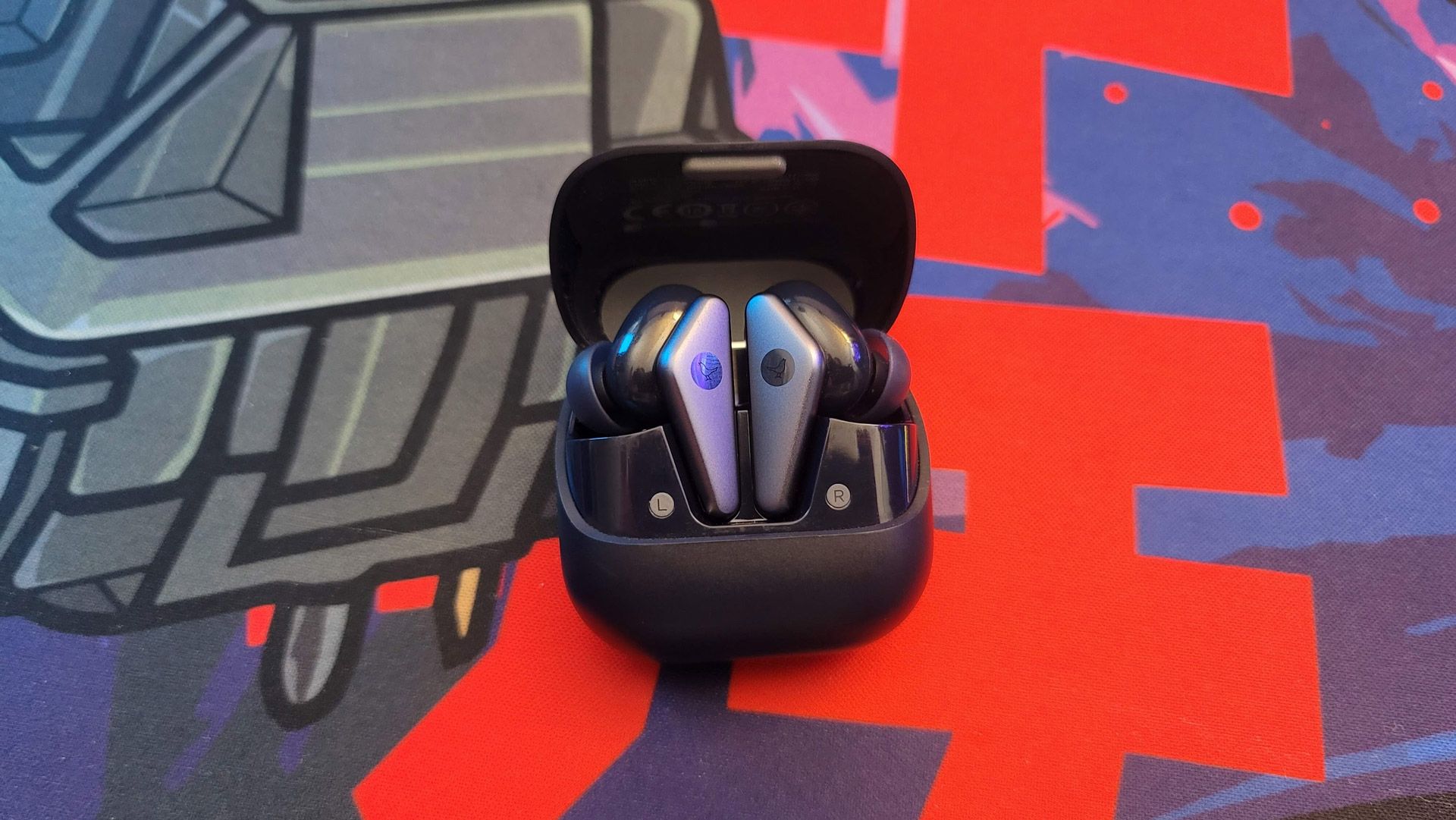
Compared to last generation, the buds actually look quite similar outside of color. The case has received a much bigger, or should I say smaller, revision. The new case is only 2 x 2 inches and just under an inch thick, so it’s easy to slide into your pocket and forget about. It’s one of the smallest charging cases I’ve used for a set of true wireless earbuds, but still manages to pack enough battery for three full recharges and now supports wireless Qi charging. It also has its own polished logo badge and looks quite nice overall.
The new buds have also been upgraded with Qualcomm’s new QCC5141 chipset. This upgrades the buds to Bluetooth 5.2 for improved stability and connectivity. The buds can be used independently, which I used frequently when listening to podcasts and audiobooks throughout the day.
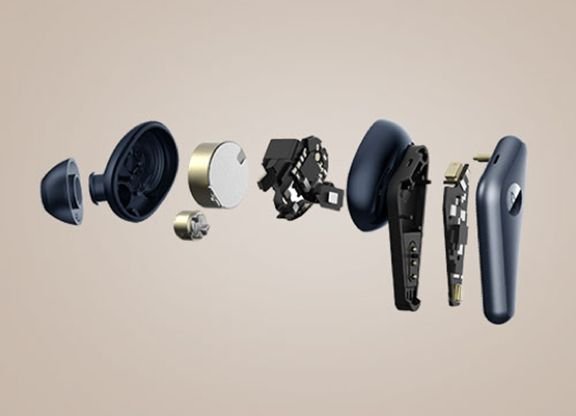
Inside, the Air+ 2s sport 5.3mm dynamic drivers. The company doesn’t share much about these units, other than they use a hi-polymer diaphragm and the usual neodymium magnets, but what really matters is how they sound and — spoiler alert — they sound great. We’ll get to this more in the listening and daily use section, but when it comes to audio quality, the Air+ 2s definitely don’t disappoint with their clear, detailed, and mildly customizable sound.
The stem design of the earbuds affords some advantages straight in-ears can’t offer. Like most true wireless buds these days, controls are all handled through capacitive touch, but instead of having to tap on the buds themselves, you can tap on the bottom of the stem. You can hear this, or course, but it’s much nicer than having to press a bud into your ear canal just to change tracks.
It also means improved call quality. The Air+ 2s use two microphones in each bud to detect and cancel noise from the environment and to pick up your voice. The stems also allow the vocal mic to be positioned closer to your mouth. That extra inch of distance might not seem like much, but it does help, limiting how obscured that microphone can become and consistently leads to clearer calls.
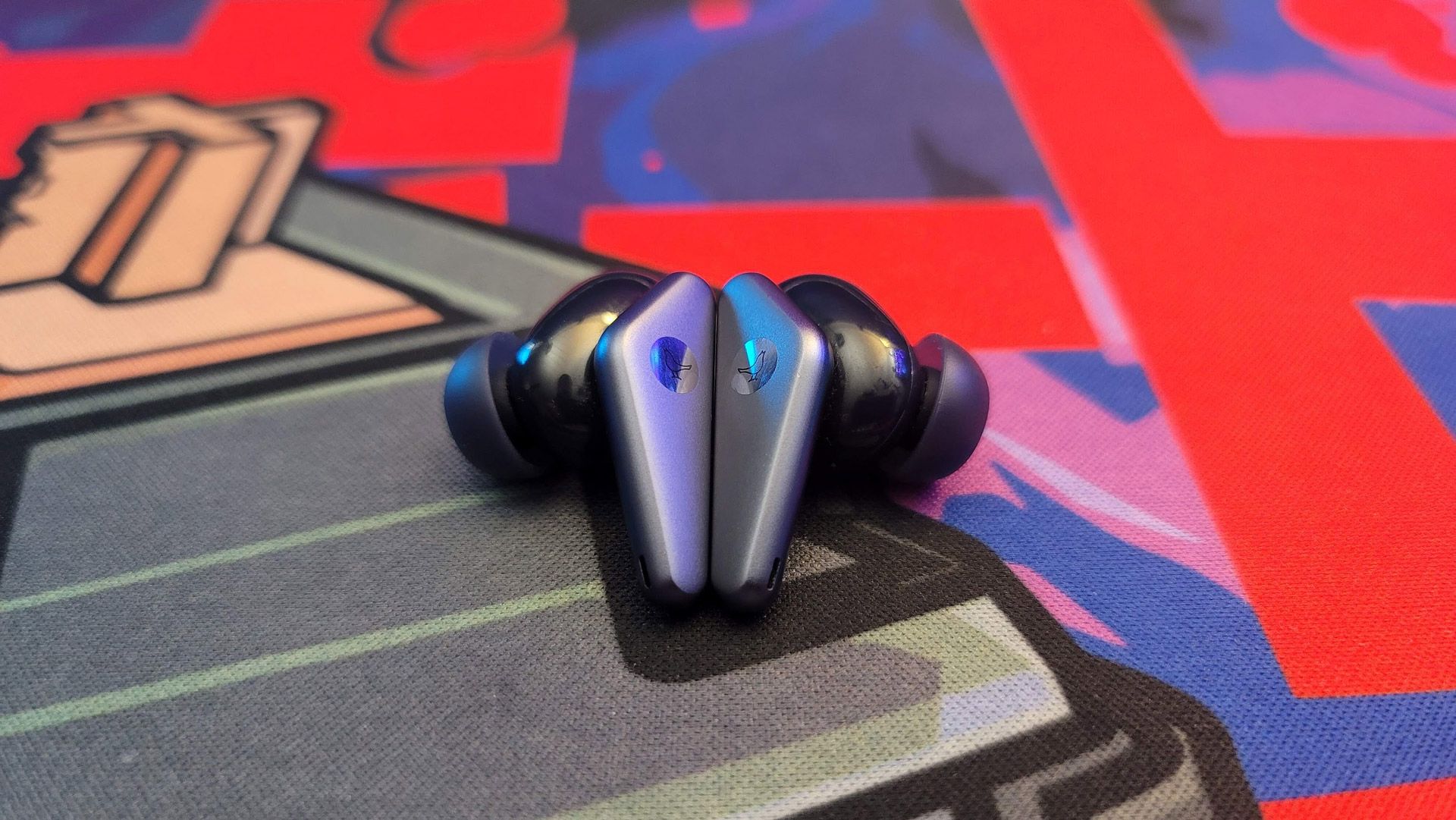
As a flagship bud into 2021, it also features premium features including active noise cancellation, wear sensors, and water resistance. The ANC is actually quite good, coming close to my Jabra Elite 7 Pros when it comes to blocking out low-frequency noise and other consistent hums (like the sound of PC fans, heating vents, or engines). The Sony WF-1000XM4s are still better for blocking out middle-frequency noise and are better for office use. Still, these manage to impress and do a good job of pumping up the quiet, so to speak.
The wear sensors are a nice feature that worked consistently. If you’re not familiar with the term, a wear sensor automatically pauses music when taken out of your ear and resumes playback once it’s back in place. They’re especially great for audiobooks. Over a month of testing, they rarely missed the mark and only became confused if I was holding the bud in my hand, triggering the sensor.
The IP rating is respectable, coming in at IP54. Translated, that means the buds are guarded against dust and water splashes from any direction. Most noise-canceling earbuds are rated for IPX4, leaving dust out of the equation, so there’s a one-up here. The Samsung Galaxy Buds Pro still lead the pack with an IPX7 waterproof rating, which is still a bit of black magic for an earbud offering active noise cancellation. IP54 means these buds will be safe for all but a torrential downpour and are a good fit for taking to the gym.
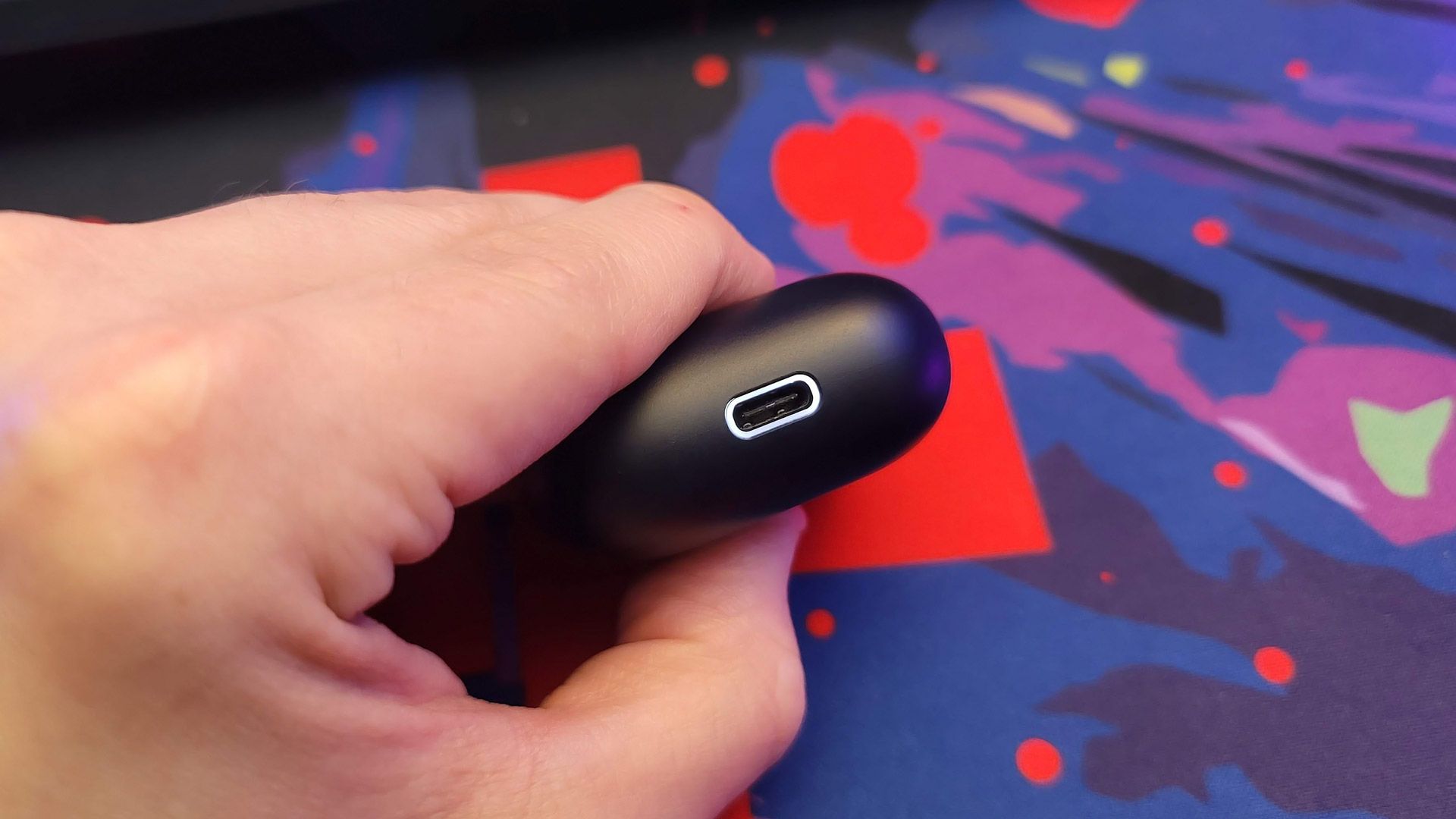
Battery life is also decent, coming in at 6 hours per the spec sheet. The case offers three more recharges, bringing that to 24 hours total. As always, this depends on how loud you’re listening, but I found it to be mostly accurate in my case. You can easily check the charge level on the case by pressing a button on the back which lights up a ring around the USB port. The ring also doubles as a charging indicating, turning off when the case is fully charged.
Libratone Air+ 2 – Fit and Comfort
The Libratone Air+ 2s are shockingly comfortable. The oval-shaped buds are perfectly sized to rest in the ear while the silicone tip secures into the ear canal. As a stem-based bud, they don’t sit perfectly flush, but because of how they do sit, and the shape of the bud itself, they don’t press into your ear, even when laying on your side or resting your head in your hand. I even fell asleep with a bud in and woke up the next morning, never having woken once, with the bud still securely in my ear. The Air+ 2s are the hands-down most comfortable earbuds I’ve ever used.
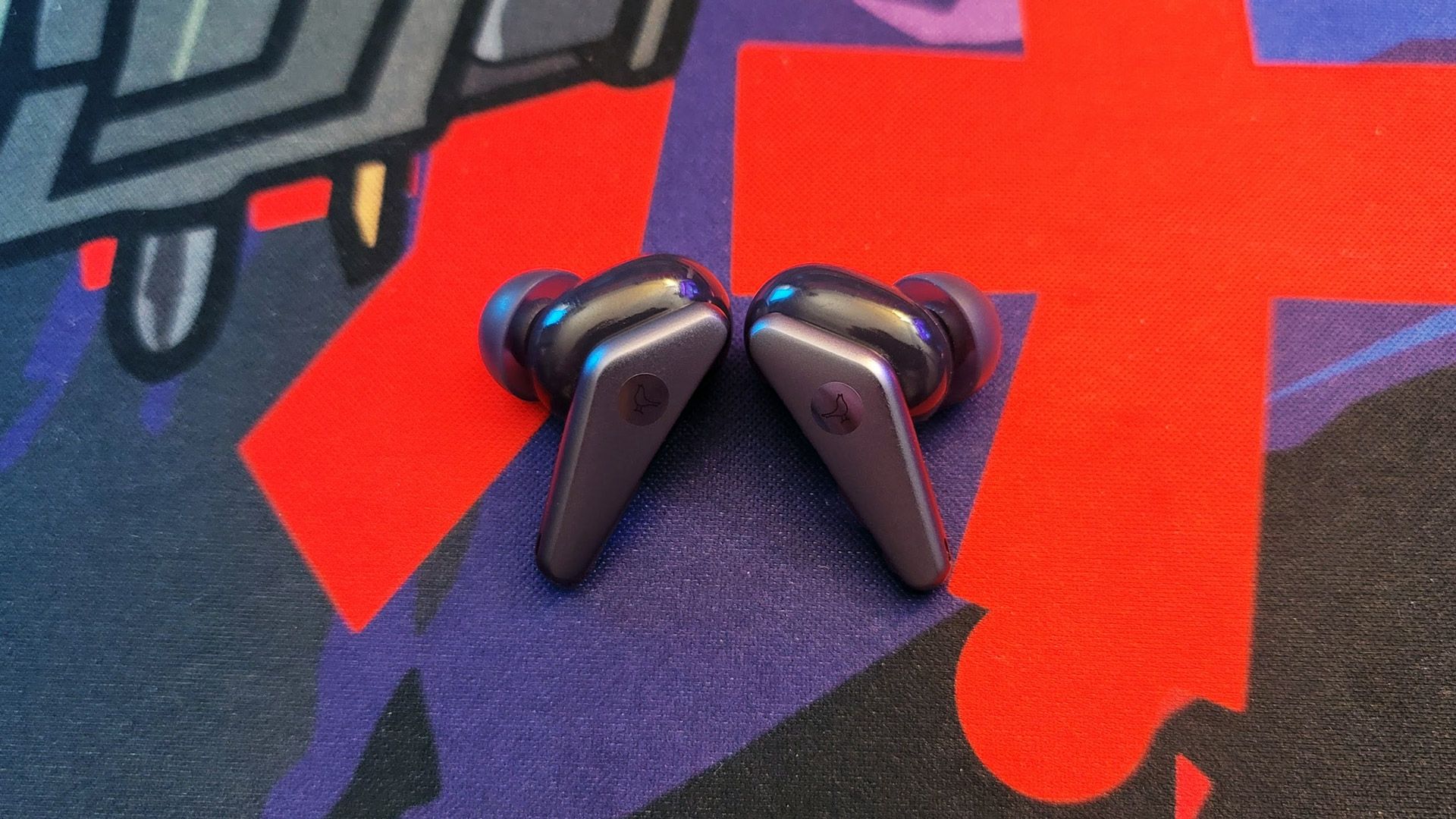
They are, without exaggeration, an earbud you can forget you’re even wearing. More than once, I’ve gone about my day forgetting I have one in my ear having paused it and gone about my business — not good for my day job, but a testament to how comfortable and stable these earbuds are.
You can use these even through vigorous workouts and not have to worry about them shaking loose. Once they’re in, they’re solid.
Libratone Air+ 2 – Listening and Daily Use Impressions
I’ve been lucky enough to spend a bit of extra time with the Libratone Air+ 2s due to the holiday season and the resulting breaks to my writing calendar. I’m glad I did, because these buds surprised me. Having never heard of Libratone before this review, I really didn’t know what to expect. I can tell you what I absolutely did not expect, was that these buds would completely uproot my rotation of wireless earbuds and become the sole pair I’m reaching for every day.
They did it. They won. These buds unseated my Jabras, and Sonys, and Samsungs, and Bowers & Wilkins. Through a blend of sound quality, features, comfort, and constant reliability, they became my go-to daily accessory and have lived in my pocket for a solid month. And this coming from a guy who really didn’t like stem-style earbuds before!
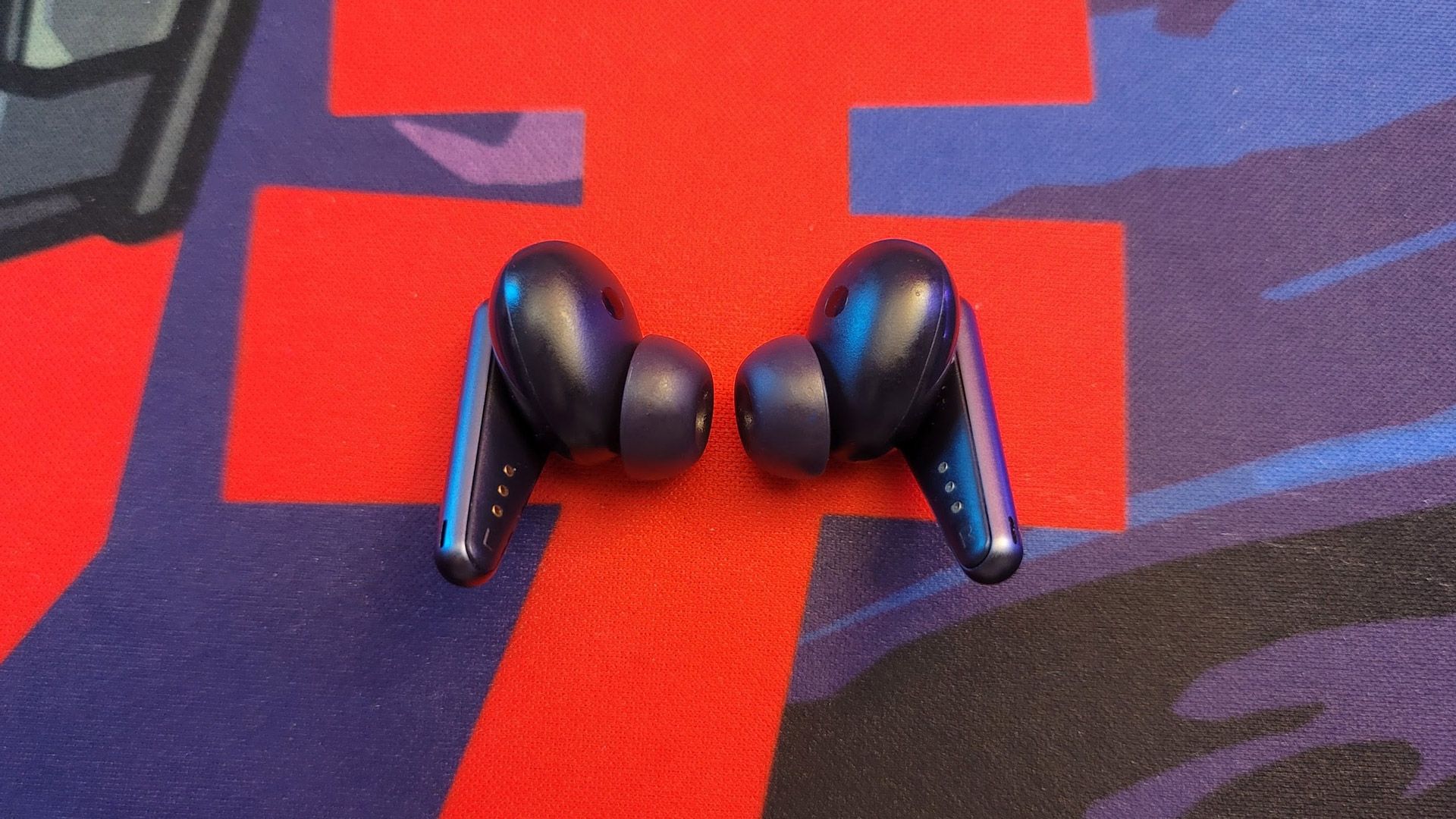
So yes, I’m surprised. Now let’s get into why they’ve become my go-to pair of earbuds.
First off, they sound great. Out of the box, they have a balanced sound signature. They’re not overly bass-heavy and have a lot of detail in the mids and just enough sparkle in the highs to sound crisp and airy. Inside the app, you can also choose between an automatic Smart EQ, Neutral, Bass, and Treble presets. None of these are overdone, but instead help the earbuds to lean more toward those frequencies. I found myself swapping between the Neutral and Bass tunings when I wanted a little more punch in my music, but the bass isn’t bloated and doesn’t overwhelm the other frequencies. It’s not as tight and textured as some of my wired earphones but is definitely very good against the rest of the true wireless market.
The quality of the ANC is also surprisingly good. I found myself turning it on when I wanted to work at my PC. It completely cut out the sound of my PC fans and even some of the sound of my kids roughhousing downstairs. Let’s be honest with ourselves about the earbud market: these days, everyone is offering ANC, even down to $40 earbuds. Most aren’t great. These stand right alongside Samsung and Jabra while falling short of Sony (I don’t have a pair of AirPods Pros to test against, sorry!).

I was also impressed with the automatic setting. Usually, I turn ANC all the way up and forget about it. Here, I let the buds sense my environment and adjust it down which actually made it quieter than with ANC turned all the way up. It did this by bringing down the volume of the cancellation frequency to match what the buds could hear through their microphones. This isn’t a unique feature but is definitely a good implementation of it.
Just as importantly, these earbuds just work. They’re comfortable enough to forget you’re wearing. They connect quickly and stay connected. They fall asleep to save battery power and instantly wake back up again without having to fuddle with reconnecting. They have enough battery life to listen for most of a workday and simply putting them back in the case over lunch pushes them the rest of the way. Even the touch controls are reliable and aren’t prone to miss-taps, pausing or skipping tracks when you only meant to readjust them in your ear.
But they’re not perfect. Let’s take those touch controls. To prevent inadvertent taps, controls are limited to double and triple taps only. While good on paper, that means you never have access to all of your controls at one time. It’s Choose Two between volume, track controls, and adjusting your sound mode (ANC, transparency mode, etc).
I also wish that there was more fine-grained control of the equalizer settings. Presets are nice, but for users comfortable with getting in there and adjusting their own frequency bands, it can feel a bit limiting.
And finally, it has to be said, though I think the feature set is sufficient against most true wireless earbuds, at this price, it does fall a bit short. The Sony XM4s have advanced features like LDAC support and DSEE Extreme upscaling, and spatial audio. The Air+ 2s only have aptX, an earfit test, and customizable tap controls, but for $229, you’re not really getting anything here you wouldn’t find by turning to the competition.
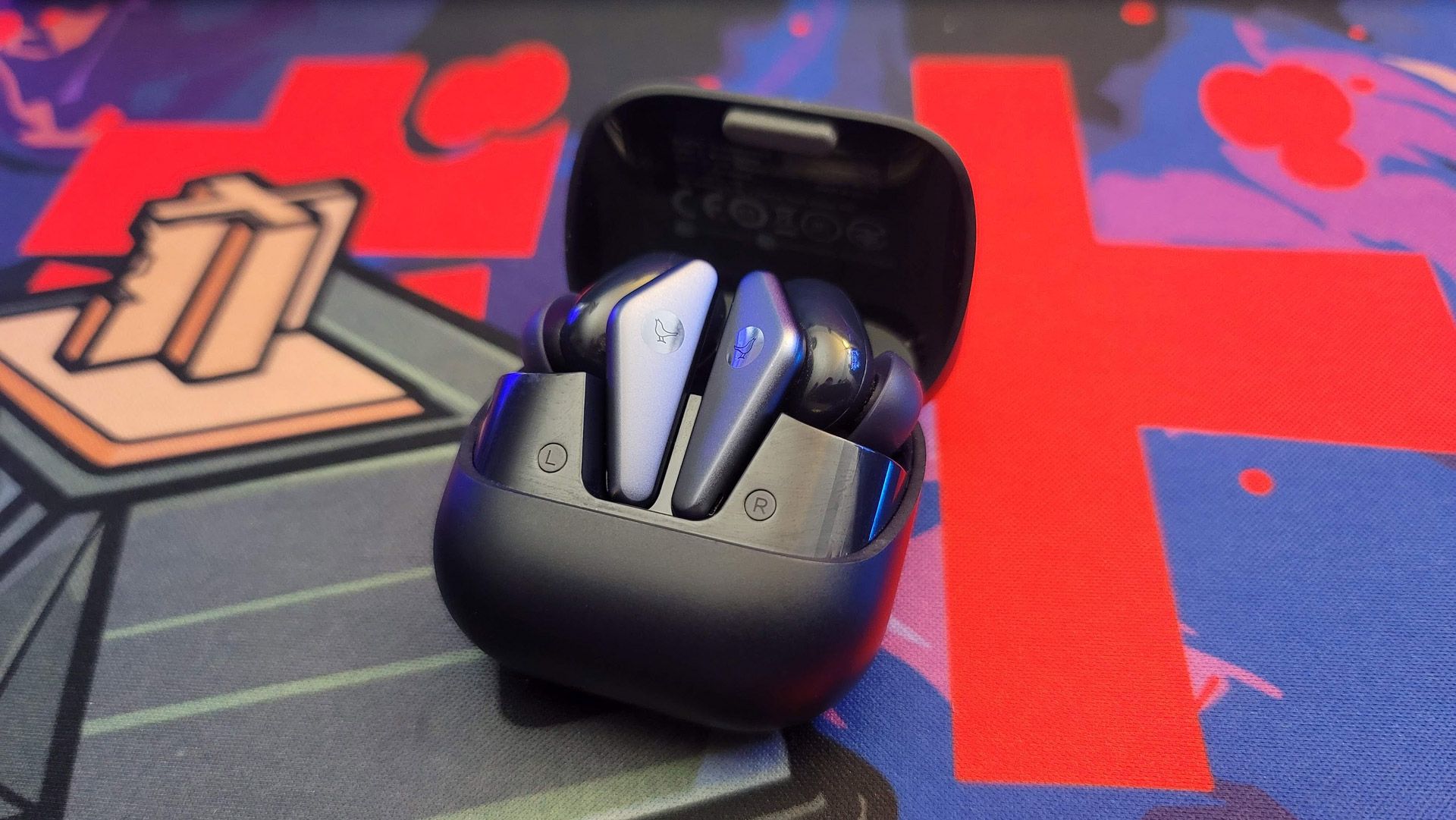
Final Thoughts
The Libratone Air+ 2s are undoubtedly great earphones. Their biggest strong points are how comfortable and consistent they are. You’re able to put them in and forget you’re wearing them (as I did many times). Add in great sound and high-quality ANC and you have a recipe for an excellent pair of earbuds that’s ready to earn a lot of fans.
As an audio reviewer, I have more earphones than I can use. I currently rotate between the latest Jabra, Samsung, and Sony flagship earbuds. Or did. The Air+ 2s have completely taken over my rotation since only my second day testing them. They’re the kind of buds that you can rely on to be consistently great and are the only bud that’s won me over to such a degree this entire year.
But, that price. At $229, they’re more expensive than the Jabra Elite 7 Pro, Samsung Galaxy Buds Pro, or even the Apple AirPods Pro, and are closing in on the Sony WF-1000XM4. That’s a tall order for a brand without the same name recognition as its biggest competitors (at least in the United States). It demands the consumer take a leap of faith, especially so because the buds also aren’t clear winners in any single area and instead excel as a whole package. Yet, they remain great, unseating those competitors in my daily use even outside of the review process. I can’t help but feel like they would benefit from a lower price.
If you’re willing to take the leap, there’s something great here, I just wish it was more accessibly priced to whet the appetite for what they have to offer.
The product described in this article was provided by the manufacturer for evaluation purposes.

